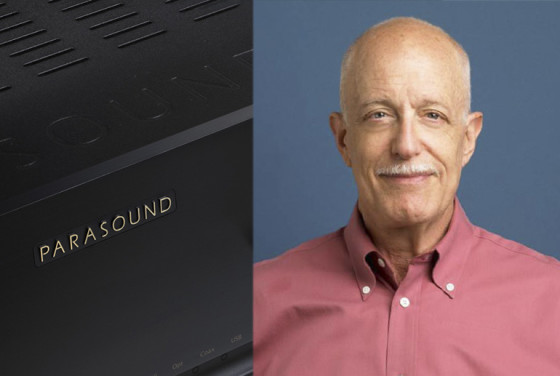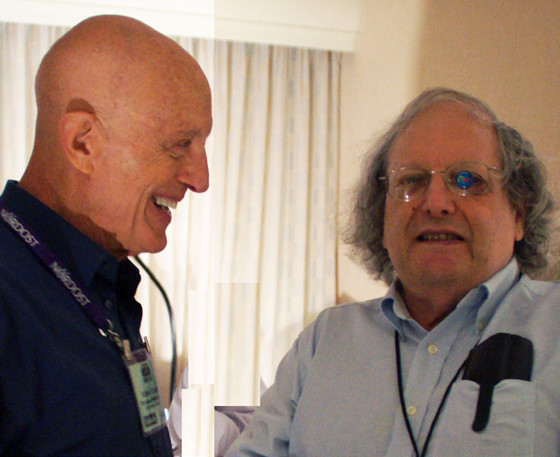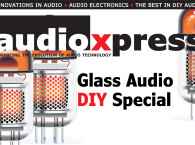A Career Built on Respect and Quality

Shannon Becker: Tell us a little about your background.
Richard Schram: I grew up listening to family records and music on FM stations WFMT, WEFM, and WNIB in Chicago, IL. I took piano lessons very early and my parents later enrolled me in the Northwestern University Music Department’s preparatory piano program when I was eight.
I came to the Bay Area in 1964 and graduated from the University of California at Berkeley in 1968. This was an extraordinary time and place with the convergence of music, FM multiplex broadcasting, advancements in audio technology, and the role of music in social change and vice versa (not necessarily in that order).
During school I had a part-time stock boy job at the original Pacific Electronics store near campus where I installed phono cartridges and assembled the Quadraflex house brand speakers. I moved on to sales, store manager, and a management position in the main office. The company changed its name to Pacific Stereo and had grown into a regional retail chain when CBS purchased it in 1973.
I was tasked with developing and sourcing the company’s house brand products. I traveled to Japan dozens of times in the 1970s and with letters of credit and the prestige of the CBS-Sony joint venture, I was able to cultivate relationships at levels in Japanese companies that would have been unattainable for someone in his 20s. I also worked with engineers at the CBS Technology Center in Stamford, CT.
Only a handful of audio manufacturers developed products while working for a retailer and none of those was anywhere near as large as Pacific Stereo. I had the unique benefit of our size, CBS’s backing, and direct, unfiltered feedback from a very demanding sales force. I learned to create products that were salable, reliable, and most of all, relevant.
One of those house brands, Concept, has a loyal following on Audiokarma and when I look at the robust designs of my products from the mid–late 1970s, it’s clear where Parasound’s roots are. Take for example, the 1978 Concept 16.5 Receiver (www.chrisinmotion.com/MyFavoriteReceivers.htm#16.5).
I conceptualized and developed the details of the 1978 Concept 16.5 Receiver’s product appearance, its performance objectives/specs, and its feature set. The circuits were designed by a Japanese team led by engineer Ken Hashida.
Shannon Becker: How did you become interested in audio electronics?
Richard Schram: Like many audio manufacturers, I started my journey as a music lover/performer and audio enthusiast. One hot and humid summer day, I wandered into an Allied Radio store three blocks away from the Northwestern music building. The store was air conditioned and in the back room they were playing Stan Kenton’s “Intermission Riff” (1957) in stereo on a reel-reel tape deck. I was enthralled.
In 1963, I attended one of the first live vs. recorded demonstrations with Chicago’s Fine Arts Quartet and, if I recall correctly, an Ampex studio recorder, Dyna MKII amps, and AR3 speakers. At that time, it was magical and I was hooked on audio electronics to bring lifelike music into the home.

Shannon: Can you tell us about your work? How and why did you start your company, Parasound?
Richard Schram: I left Pacific Stereo in December 1980. I had some wonderful consulting gigs with JBL, Yamaha, the original Jensen, and I helped my late friend Chuck Kittelson launch Proton in the US. But I wanted to make my own products and Parasound’s first model came to market in September 1981.
Shannon Becker: Why did you decide to have Parasound products built in Taiwan?
Richard Schram: Most of my products in the 1970s were sourced in Japan and the earliest Parasound models were also built in Japan. But small audio manufacturers couldn’t compete as the yen soared and nearly all of them went out of business by the early 1980s.
I chose Taiwan because there were some quality factories owned by audio enthusiasts who welcomed Parasound as a small customer. I’ve continuously worked with one contract manufacturer (CM) for 33 years, another for 26 years, and the third for seven years (I’ve known the general manager since she worked for the first CM 25 years ago). I’ve challenged them with increasingly ambitious projects over the years and these Taiwanese will persevere until they overcome the most difficult obstacles. In contrast, most Chinese CMs will walk away from a small audio customer’s project when difficulties arise and become inconvenient for them.
Shannon Becker: How has your strategy changed since you opened in 1981? What has stayed the same?
Richard Schram: My original plan was to produce and sell audio products around a core of the largest US audio chains: Pacific Stereo, my ex-employer, Tech HiFi, and CMC. In this plan, the retail chains purchased with letters of credit, I’d work three days a week and make a million dollars a year. What a plan! As these companies failed in the 1980s, I stopped targeting large customers and moved Parasound upscale to appeal to the finer independent audio retailers. I engaged John Curl in 1988 to assist us in creating flagship products.
Our products’ reliability caught the attention of audio companies who became our OEM (original equipment manufacturer) customers. With my OEM background developing OEM business was second nature. Our OEM business included: customized CD changers, which AEI Music (later DMX) installed in the listening kiosks at every Borders Book Store; Sonance’s power amplifiers for the first five years; sub amplifiers and a line of outdoor speaker models for Atlas/Soundolier and Memorex; 500,000 CD laser lens cleaners to Memorex; and CD loaders, servo boards, and FL displays to UltraAnalog, which built complete players for Krell, Classe, and later for Parasound. We produced a fetal heart rate monitor for a local medical instrumentation company; built Magnavox speakers for Philips; and FM-AM tuners for Aragon, Magnum Dynalab, and Classe. We also built a subwoofer-satellite system for Mitsubishi North America that contained the first commercial subwoofer driver to use Ferrofluidics 027 thanks to Mike Klasco.

Shannon Becker: How has John Curl contributed to the success of Parasound and how did you two meet?
Richard Schram: I first met John on an airport bus in Tokyo. He was visiting the manufacturer of a Harman Citation amplifier he had worked on with Matti Otala. I was re-introduced to John by one of my employees who was friendly with him. John offered to help us because he felt that some of the products we were already building were worth his attention.
Shannon Becker: Tell us a little about the company’s fabled Halo JC 1 mono power amplifier.
Richard Schram: The JC 1 project was therapy for me. In 2000-2001, I was roasting in DSP hell with the Finnish design house working on our C 1 and C 2 7.1 channel surround processors. I needed something to lift my spirits and the idea of making a really great stereo amplifier—or better, an awesome mono amp — would pull me out of my funk. John Curl assembled his team — Carl Thompson, his long-time partner who designed circuit boards for all of his products (including the Vendetta phono preamplifier), and the late Bob Crump, who specified many of the key parts. Bob was a legend because he really could hear the differences in sound between materials and the brands of audio parts. The JC 1 came out in March 2003 and its popularity hasn’t diminished.

Shannon Becker: Do you have a favorite product?
Richard Schram: I imagine it’s easy for most audio manufacturers to identify their favorite products. This is all but impossible for me because of how intensely I’m involved in the conception and development of every product.
Shannon Becker: What is it about your amplifier designs that give them such longevity in the audio market?
Richard Schram: We take the old carpenter’s adage “Measure twice, cut once” to an extreme. In my opinion, the audio manufacturers who come out with “new and improved” models every year didn’t know or care enough to get them right in the first place or are looking for additional revenues with questionable value propositions. Rather than using valuable resources to churn models and annoy our customers, we aim for lasting value and respecting the investments our customers make in the brand.
Shannon: What do your attribute your company’s continuing success?
Richard Schram: Since I’ve been doing this for so long I expect I’ve had the opportunity to make plenty of mistakes. As I matured I realized I could learn something—and I have. We’re very good at what we do these days. History is littered with audio companies with big ambitions that failed because their owners put making money ahead of product value, product quality, and their business practices. I’ve learned that if I value our customers and do my job well the money will follow. We respect our customers because most of them don’t have trust funds and have to work for their money. So we give them their money’s worth and then some. Plus, we provide technical support that’s second to none. Do you know any audio company that answers every phone call and every email request for pre-sales or after-sales support?

Shannon Becker: Can you detail anything you’re using for our audioXpress readers?
Richard Schram: I would like audioXpress readers to know that Parasound will continue to use traditional audio technologies as long as they’re superior for the reproduction of music. Behind the scenes, we are researching ways that new audio technologies can meet and surpass our standards. I’m confident that future products will keep Parasound ranked as the audio industry leader in delivering outstanding performance, reliability, value and customer support.
This interview with Richard Schram was published in audioXpress, May 2015.






